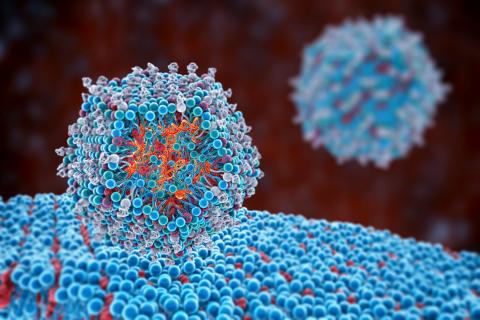Reaction: Cancer cases in individuals under 50 years of age have increased globally over the last three decades.
Since 1990, the incidence and deaths from early-onset cancers in teenagers and young adults have substantially increased worldwide. These are the main findings of a study published today in the BMJ Oncology journal.

Alejandro - cáncer 50
Alejandro Pérez Fidalgo
Medical doctor in the Oncology and Haematology Department at the Valencia Clinical Health Research Institute (INCLIVA), Valencia Clinical Hospital
This study assesses whether cancer in young people is more common and has a higher mortality rate today than it did 30 years ago. To do this, they evaluate the changes that have occurred in 30 years (between 1990 and 2019) in the diagnosis of cancer in adolescents and young adults (AYAs), which in this study is defined as those diagnosed between the ages of 14 and 49.
They compared the incidence rates, Disability-Adjusted Life Years (DALYs) (which is the sum of potential years of life lost plus years of life lived with a disease), and mortality of 29 AYA cancer diagnoses in 204 different countries. The data was extracted from a global database (Global Burden of Disease).
The incidence of tumors recorded in 2019 is 1.82 million when considering all countries, which reflects the volume of data in this database and adds reliability to the results.
The study's conclusions are that the incidence of cancer in young people (AYAs) has clearly been increasing since 1990, as have the DALYs. However, cancer mortality tends to decrease. This suggests two hypotheses: changes in lifestyle habits or exposure to new agents, more prevalent today than in 1990, may be behind the increase in incidence. Conversely, the other hypothesis is that improved diagnostic and treatment methods are reducing mortality.
The distribution by tumor type is uneven. For example, common tumors in women, such as breast cancer and gynecological tumors, show a significant increase in incidence, indicating that this increase in cancer in young people (which occurs in both sexes) is more pronounced in women. Other tumors that also show a significant increase in incidence include non-melanoma skin cancer and gastrointestinal tumors.
A potential confounding factor in these types of studies is overdiagnosis or underdiagnosis and classification bias. In other words, since the reliability of diagnostic techniques and professionals' expertise in diagnosis also improve over time, and access to these techniques is often greater, there can be a false sense of increased incidence. However, the fact that the increase in incidence is actually greater in developed countries (where the difference in access to techniques should not be as significant) and that this study aligns with other similar studies with different databases (Ugai T et al. Nature Rev 2022 (10):657) suggests that this confounding factor may not be as relevant, and the data on the increase in the diagnosis of cancer in adolescents and young adults is a reality.
Therefore, there is a growing body of evidence indicating that young cancer patients are becoming more common, and it would be reasonable to implement measures focused on the care of young patients with specific needs that require a certain level of expertise in their management.
Furthermore, it is increasingly necessary to conduct studies that allow us to identify potential causes behind the increase in cancer in these population groups.
"Soy Miembro del Grupo de Trabajo de la SEOM de Adolescente y Adulto Joven y estoy coordinando la realización de un documento de consenso sobre este aspecto en la actualidad”.
- Research article



